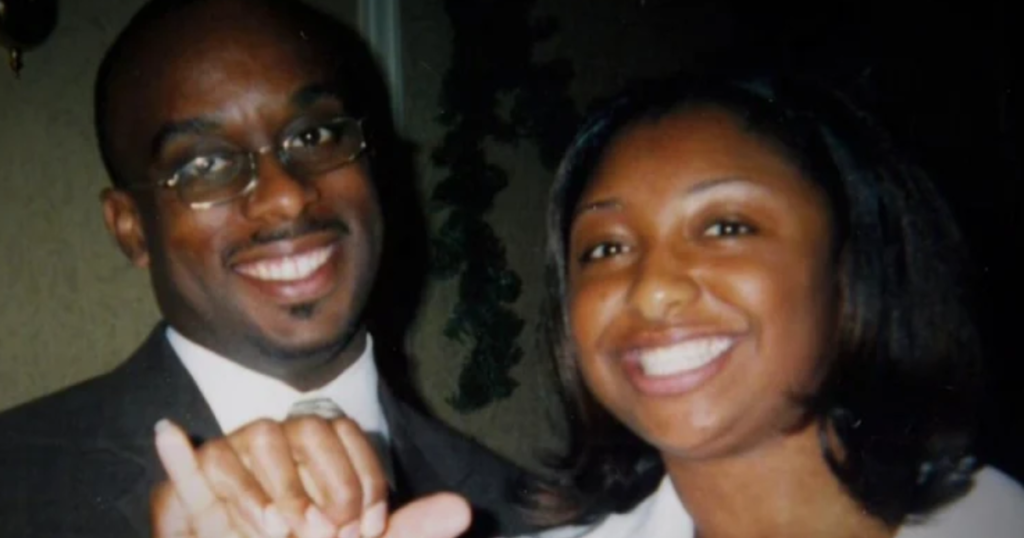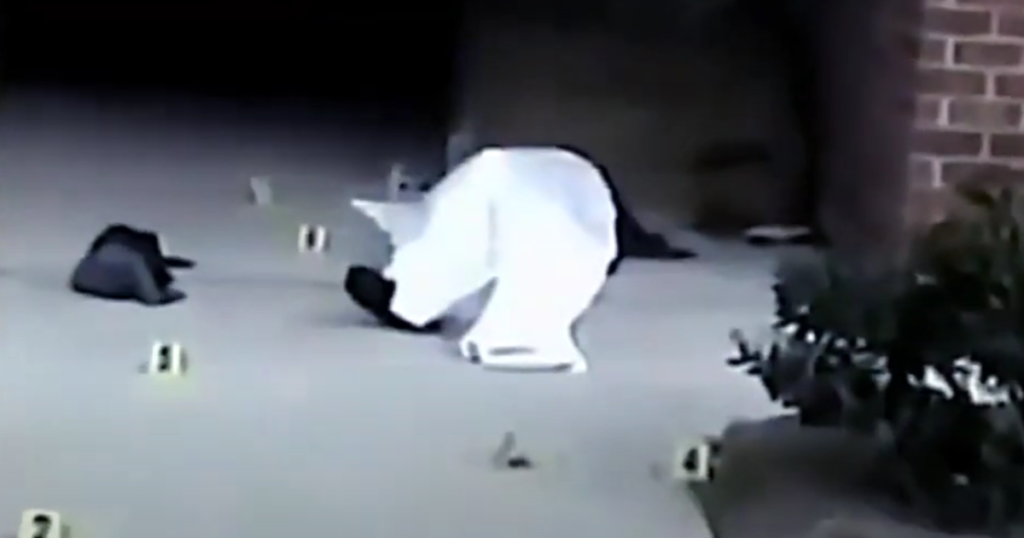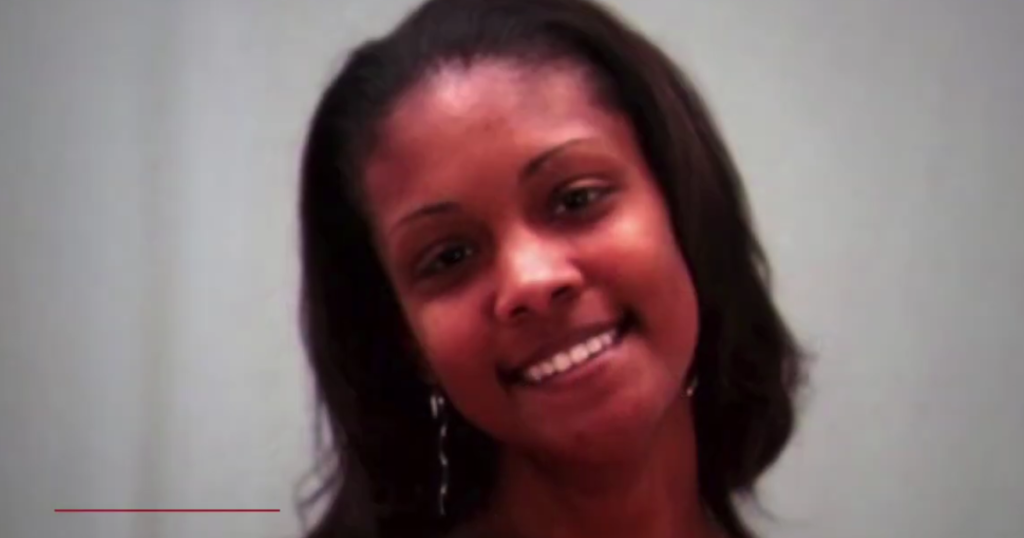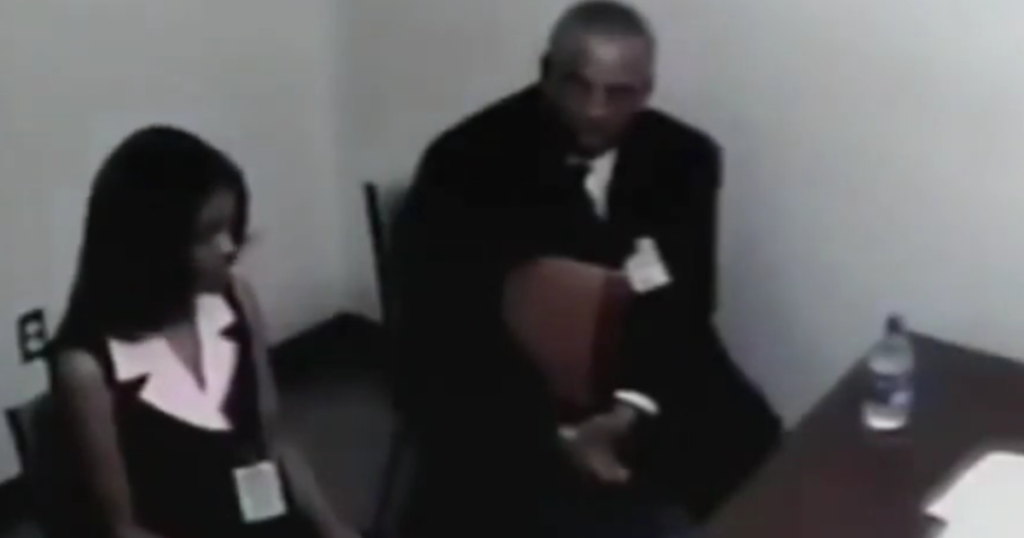Born on November 10, 1981, in New Bern, North Carolina, Denita Smith was a beloved daughter of Dale and Laverne Smith. Growing up in a household filled with love and laughter, she shared an unbreakable bond with her three siblings—Derek, Darius, and Danielle. Denita Smith was a vibrant and charismatic young woman, someone whose presence could never go unnoticed. Friends and family often spoke of her ability to bring warmth into any room, her radiant smile making an impression on everyone she met.
Denita excelled in academics, earning honors in high school before enrolling at North Carolina Central University. Initially majoring in English, she later discovered a deep passion for photojournalism. Captivated by the power of visual storytelling, she became known for her incredible ability to capture emotions through her lens. Her commitment to her craft earned her respect among peers and professors alike, and she embraced her role as a visual storyteller with enthusiasm and dedication.
Love and Distance
While pursuing her dreams, Denita Smith also found love. She and Jermeir Stroud, a young police officer from Greensboro, North Carolina, met during their college years and built a strong relationship over six years. When Jermeir proposed, Denita was thrilled—she envisioned a future filled with love, marriage, and professional success. However, their relationship faced a significant challenge: distance. After graduating in 2004, Jermeir relocated to Greensboro for his job, while Denita Smith remained in Durham. Though only an hour apart, the physical separation made it difficult for them to spend time together regularly.
What Denita Smith didn’t know was that their emotional distance had also widened. Jermeir had become involved with a 911 dispatcher, Shannon Crawley, a single mother of two.

A Shocking Crime Scene
On the morning of January 4, 2007, just after 10 AM, a 911 call was placed by a Durham resident. A disturbing sight had caught his attention—outside an apartment complex, a woman lay motionless at the bottom of a staircase, surrounded by blood.
When emergency responders arrived, it was too late. The woman was unresponsive. As officers assessed the scene, they confirmed the worst: the victim was Denita Smith.
Detective Sean Pate of the Durham Police Department led the investigation. At first, Denita’s tragic position at the bottom of the stairs suggested an accidental fall. Her personal items—keys, purse, and wallet—were scattered nearby, reinforcing this assumption. However, something didn’t add up. Her wallet still contained cash, an unlikely detail if robbery had been the motive.
A closer look at Denita Smith’s body changed everything. A gunshot wound to the head was discovered, initially concealed by the way she had fallen. It became clear: Denita had been murdered.
Read more Shannon Graves: How Her Killer Almost Got Away With It
A Mysterious Witness
With no surveillance cameras capturing the incident, investigators relied on witnesses. Though the apartment complex was typically active, many residents were away for the holidays. Despite this, authorities received a crucial lead from the maintenance director.
He reported seeing a tall Black woman with a fair complexion driving a burgundy SUV near the crime scene. Even more concerning, he had spoken to her. After hearing a gunshot, he noticed the woman appeared distressed. When he asked if she had heard the noise, she admitted she had and seemed visibly shaken. He suggested they meet elsewhere to report the incident together—but instead of staying, she quickly left the area.
A Missed Discovery
Although the maintenance worker eventually reported the incident to 911, his call was not the first to alert authorities. About an hour earlier, a separate emergency call had been placed, prompting officers to check the area. Strangely, when they arrived, they found nothing out of the ordinary—no body, no evidence of a shooting.
How could this be? Had Denita’s body somehow gone unnoticed? The apartment complex was sizable, but it was hard to believe that first responders could have overlooked such a crucial scene. This discrepancy only deepened the mystery surrounding her death.

A Fiancé Under Scrutiny
As news of Denita Smith’s murder spread, her loved ones rushed to the scene, including her fiancé, Jermeir Stroud. Overwhelmed with grief, Jermeir approached Detective Sean Pate, eager for answers.
As standard procedure in homicide cases, investigators took a close look at the victim’s significant other. When asked about his whereabouts that morning, Jermeir claimed he had been at home sleeping, recovering from a late shift at work. However, he had no alibi to confirm this. While his statement wasn’t damning, it wasn’t solid proof of innocence either. With no further evidence against him, police noted his account and allowed him to leave.
The next day, investigators reached out again with more pointed questions. One, in particular, changed the course of the case:
“Do you know anyone who drives a burgundy SUV?”
Without hesitation, Jermeir provided a name—Shannon Crawley.
Read more Dennis Vaughan: The 5-Year-Old Who Cried for Help – But No One Listened
A New Suspect Emerges
With Shannon Crawley’s name in the mix, the investigation took a dramatic turn. Until this point, authorities had entertained the possibility that Jermeir himself may have been involved. But now, another person had entered the picture.
Pressed for details, Jermeir admitted to having an affair with Shannon in the past. According to him, their romance had ended nearly a year earlier, and he described their relationship as a “mistake.” The turning point came in 2005 when Shannon became pregnant. Ultimately, the two decided on an abortion, which Jermeir believed marked the end of their relationship.
While he insisted the affair was over, Shannon had remained a presence in his life. Though no longer romantically involved, the two still spoke frequently. Jermeir viewed it as a friendship, but investigators soon realized Shannon may have seen things differently.
Obsession or Coincidence?
In the months following their breakup, Shannon’s attachment to Jermeir never truly faded. Investigators noted several red flags:
- She began attending his church—a coincidence, according to Jermeir.
- She purchased a home near his—something he initially dismissed as happenstance.
- She remained in frequent contact, despite no longer being romantically involved.
When confronted, Jermeir made a chilling admission—he now believed Shannon had been stalking him. At the time, he hadn’t recognized the warning signs, but as he spoke to investigators, certain details began falling into place.
Then came a critical moment in the timeline—Christmas Eve, 2006, just two weeks before Denita’s murder. That night, Jermeir walked into church, proudly escorting his fiancée, Denita Smith.
Shannon was there.
Her reaction was one of complete shock. It was the first time she realized Jermeir was engaged—perhaps even the first time she fully understood he had moved on. Until that moment, Shannon may have believed there was still a chance for them.
But that night shattered any illusion.

Shannon’s Story vs. The Truth
With strong suspicions now surrounding Shannon, investigators sought her out. They tracked her to her workplace and questioned her about her whereabouts on the morning of Denita’s murder.
Her response? She had been at home caring for her sick child.
She didn’t deny her past relationship with Jermeir and openly admitted they had once been involved. However, her version of events did not align with what Jermeir had told police.
According to Shannon, their relationship had ended because she didn’t want children—a direct contradiction to Jermeir’s claim that their romance ended after her pregnancy and abortion.
The inconsistencies didn’t stop there.
When asked if she knew Denita, Shannon firmly denied ever meeting her. She claimed to have believed Denita Smith was Jermeir’s ex-girlfriend, not his fiancée. However, given the events of Christmas Eve, investigators were highly skeptical of this claim.
Had Jermeir successfully kept his two lives separate? Or had Shannon been ignoring the truth, clinging to the hope that they still had a future together?
A Critical Break in the Case
The questioning wasn’t over. Investigators had one more pressing inquiry:
“Do you own a firearm?”
Shannon flatly denied it.
But investigators soon discovered she was lying.
A new witness, Ronald Simpson, a coworker of Shannon’s, stepped forward with a damning revelation.
He revealed that in October 2006, just three months before Denita Smith’s murder, Shannon had purchased a revolver from him.
A Break in the Case
The evidence against Shannon Crawley was mounting. Investigators confirmed that the firearm she had purchased matched the caliber of the gun used in Denita Smith’s murder. Not only had Shannon lied about owning a weapon, but she had acquired it just months before the killing.
Detectives then turned to phone records to verify the alibis of both Shannon and Jermeir Stroud. The data painted two very different pictures:
- Jermeir’s phone records indicated that his device had remained at his home during the time of the murder. While this didn’t fully exonerate him—someone else could have been using his phone—it was a positive sign in his favor.
- Shannon’s phone records, however, contradicted her alibi entirely. She had claimed to be at home in Greensboro all morning, but cell tower data placed her in Durham—60 miles away, near the crime scene.
When confronted with this information, Shannon denied everything, insisting she hadn’t been anywhere near Denita Smith’s apartment that day. But investigators weren’t done yet.

Forensic Evidence Seals Her Fate
Investigators seized Shannon’s burgundy SUV and conducted a forensic analysis, looking for traces of gunshot residue. The results were damning—gunshot residue was found on the steering wheel.
This strongly suggested that Shannon had fired a weapon and then driven her vehicle soon afterward. If she had only been a bystander, as she claimed, how could residue have ended up on her own steering wheel?
Another crucial element came from the maintenance worker, who had witnessed a tall Black woman with a fair complexion fleeing the scene in a burgundy SUV. His consistent description perfectly matched Shannon Crawley.
With overwhelming evidence in place, Shannon Crawley was arrested on January 9, 2007, and formally charged with Denita Smith’s murder.
A Shocking Turn: Shannon’s Counterclaim
Despite the serious charges against her, Shannon was released on a $100,000 bond. Her clean record, status as a 911 dispatcher, and role as the sole caretaker of her two children likely influenced the court’s decision to grant her bail.
But rather than wait for trial, Shannon and her attorney took an unexpected step. In May 2007, just a few months after her arrest, Shannon voluntarily walked into the Durham Police Department and presented her own version of events.
Her story flipped the case on its head.
Shannon’s Shocking Accusation
According to Shannon, Jermeir was the real threat—not her.
She claimed that after their breakup, Jermeir had been the one stalking her. He allegedly called her repeatedly, showed up at her workplace unannounced, and made her feel unsafe.
She even offered an explanation for the gun purchase—a concerned coworker had given it to her for protection, knowing that Jermeir carried a firearm as a police officer. She insisted that she never intended to use it and eventually got rid of it.
Then, she dropped a bombshell.
On the morning of Denita’s murder, Shannon claimed that Jermeir had forced her into her own SUV at gunpoint.
She said he made her drive to an unfamiliar apartment complex, later revealed to be Denita Smith’s residence. According to Shannon, he took her phone and keys before stepping out of the vehicle.
For what felt like an eternity, she waited, having no idea what was happening. Then, she suddenly heard shouting.
Though she couldn’t make out the words, she recognized Jermeir’s voice arguing with a woman. Moments later, a gunshot rang out.

The Escape—Or a Lie?
Shannon claimed that after the gunshot, Jermeir ran back to the SUV in a panic. According to her, he crouched in the backseat, ordering her to drive away as quickly as possible.
She also had an explanation for why the maintenance worker had seen her at the scene—she said she had stopped briefly, hoping he would realize she was in distress. However, she ultimately drove off because Jermeir had his gun pressed to her back.
The Problems with Shannon’s Story
At first, her claim seemed to offer an alternative narrative, but it quickly fell apart under scrutiny.
- Gunshot residue on the steering wheel:
- Shannon said Jermeir had touched the wheel while moving from the front seat to the back, leaving behind gunshot residue.
- Investigators found this unlikely—if Jermeir was hiding in the backseat, why would he be grabbing the steering wheel?
- Phone records placed Shannon near the crime scene:
- She had no explanation for why her phone pinged cell towers in Durham during the time of the murder.
- No previous reports of stalking:
- Shannon never reported Jermeir’s alleged harassment before her arrest. If she had been afraid of him, why hadn’t she spoken up sooner?
Jermeir’s Response
When investigators confronted Jermeir with Shannon’s accusations, he was stunned. He vehemently denied everything, maintaining that he had been at home sleeping during the time of the murder.
His phone records backed him up, but they weren’t irrefutable proof—after all, someone else could have been using his phone while he was elsewhere.
Meanwhile, Shannon remained free on bond, and the court even granted her permission to move to Charlotte, about 100 miles away, to stay with her family.
But the drama was far from over.
A Desperate Move: False Allegations Against Jermeir
In June 2008, more than a year after her arrest, Shannon Crawley made yet another shocking accusation—this time, she claimed that Jermeir Stroud had attacked her.
According to Shannon, she had been out early in the morning, walking her dog near her family’s home when Jermeir suddenly appeared. She alleged that he assaulted her at knifepoint, held her captive for hours, and subjected her to sexual violence.
Authorities took the claim seriously and launched an immediate investigation. But what they uncovered completely discredited her story:
- A medical examination found no evidence of sexual assault.
- Surveillance footage proved that Jermeir had been nowhere near Shannon that morning—in fact, he was accounted for in his hometown, making it physically impossible for him to have been at the scene.
With no evidence to support her allegations, police determined that Shannon had fabricated the entire story. Yet, despite this failed attempt to shift suspicion, she remained free on bond for nearly two more years before finally facing trial.

Read more Lisa Peng’s Triple Trial in a Shocking Love-Triangle Murder Case
The Trial Begins
On February 8, 2010, the long-awaited trial for the murder of Denita Smith began.
The prosecution argued that Shannon had become obsessed with Jermeir and saw Denita Smith as an obstacle standing in the way of a future with him. Fueled by jealousy and desperation, she eliminated her perceived rival.
Meanwhile, the defense insisted that Shannon was being framed—that the real perpetrator was none other than Jermeir himself. However, Shannon’s attorneys failed to offer a clear motive as to why he would have committed the crime. Instead, they focused on portraying him as violent and controlling, a man capable of murder.
A Major Blow to Shannon’s Defense
One of the biggest challenges for Shannon’s defense was her past false allegations against Jermeir—including the rape accusation that had been thoroughly disproven.
Her legal team fought aggressively to keep this information out of the trial, arguing that it was irrelevant to the case. But the court disagreed.
The jury was allowed to hear about Shannon’s history of making false claims, a devastating blow to her credibility.
Jermeir Takes the Stand
As the prosecution’s star witness, Jermeir Stroud testified about his past relationship with Shannon, their breakup, and the strange behavior she exhibited afterward.
On the stand, he appeared composed and credible, recounting how Shannon had continued to insert herself into his life—even purchasing a home near his and attending his church long after their affair ended.
However, during cross-examination, the defense attacked one major flaw in his character—his years of deception.
Jermeir had misled both Shannon and Denita Smith, maintaining two relationships at once. The defense argued that if he had lied to them, he could also be lying to the court.
Still, the prosecution had one last piece of damning evidence.
The Bullet Fragment That Tied It All Together
Although the murder weapon had never been recovered, forensic experts were able to analyze the bullet fragment retrieved from Denita’s body.
Their conclusion?
The bullet matched the exact type of gun Shannon had purchased just months before the crime.
It was another critical piece linking Shannon to Denita Smith’s murder.

Shannon’s Final Attempt to Convince the Jury
When it was Shannon’s turn to testify, she repeated her story—insisting that Jermeir had forced her to accompany him to Denita Smith’s apartment and that she had been an unwilling participant.
She remained calm and composed, refusing to crack under pressure. For a moment, it seemed like she might be holding her own.
But then, the prosecution introduced the evidence that would seal her fate—the tape recordings.
The Staged Tape Recordings
Unbeknownst to the jury, Shannon had secretly recorded conversations with Jermeir after Denita Smith’s murder. Supposedly, she had hoped to capture him confessing.
But there was something suspicious—her own defense team had chosen not to use the tapes.
Why?
Because the recordings didn’t prove his guilt—they proved hers.
When the prosecution played the tapes in court, the jury listened carefully.
- In the recordings, Shannon repeatedly questioned Jermeir about the murder.
- At one point, he asked her who she had been talking to. She denied speaking to anyone, but he kept pressing her.
- Then, Jermeir supposedly issued a chilling threat, warning that if she kept talking, he would find her.
At first, this might have seemed incriminating for Jermeir. But something was off.
The Final Blow: A Faked Confession?
The voice on the recordings sounded high-pitched—completely different from Jermeir’s natural speaking voice.
Even Denita Smith’s family and friends, who had known Jermeir for years, testified that the voice didn’t sound like him at all.
The prosecution suggested a disturbing theory—Shannon had staged the recordings, hiring someone else to impersonate Jermeir in an attempt to create false evidence against him.
By this point, Shannon’s credibility had been completely shattered.
The Verdict: Justice for Denita Smith
After hearing all the evidence, the jury reached their decision.
Shannon Crawley was found guilty of the first-degree murder of Denita Smith.
She was sentenced to life in prison without the possibility of parole.
Life After the Trial
As for Jermeir, he eventually left law enforcement and pursued a career in financial advising. He got married, started a family, and moved on with his life.
But no amount of justice could bring back Denita Smith.
She was a brilliant, compassionate, and talented young woman with a promising future—one that was tragically stolen from her far too soon.
Her memory, however, lives on—not only in the justice that was served but in the hearts of those who loved her.


